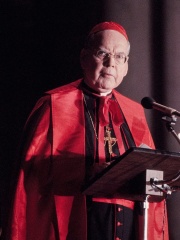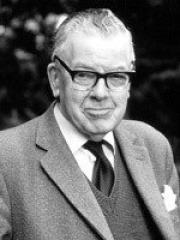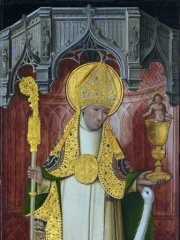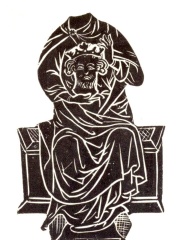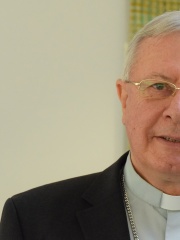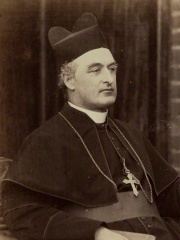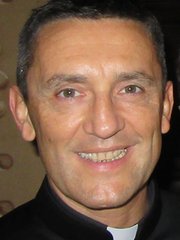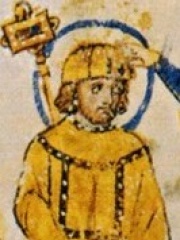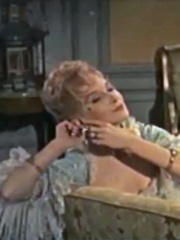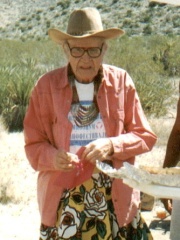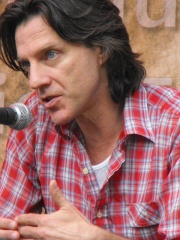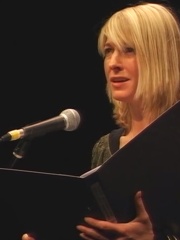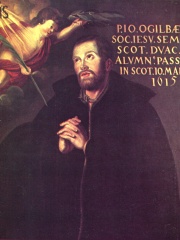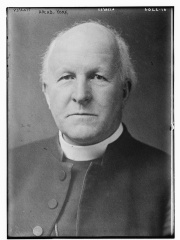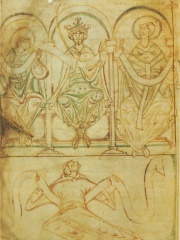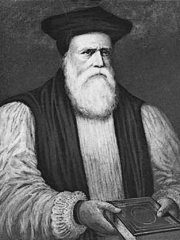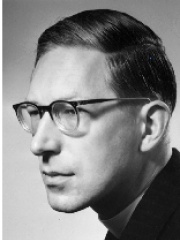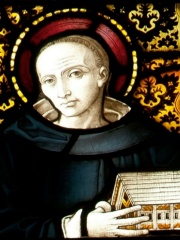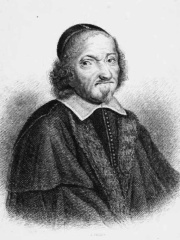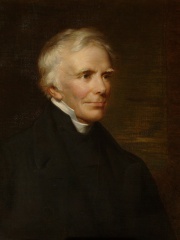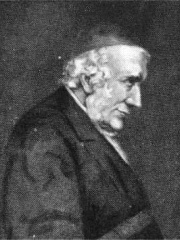RELIGIOUS FIGURE
Stigand
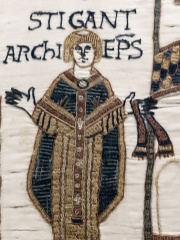
 Stigand
Stigand
Stigand (died 1072) was an Anglo-Saxon churchman in pre-Norman Conquest England who became Archbishop of Canterbury. His birth date is unknown, but by 1020 he was serving as a royal chaplain and advisor. He was named Bishop of Elmham in 1043, and was later Bishop of Winchester and Archbishop of Canterbury. Stigand was an advisor to several members of the Anglo-Saxon and Norman English royal dynasties, serving six successive kings. Read more on Wikipedia
His biography is available in 17 different languages on Wikipedia. Stigand is the 3,060th most popular religious figure (down from 2,962nd in 2024), the 5,800th most popular biography from United Kingdom (down from 5,211th in 2019) and the 114th most popular British Religious Figure.
Memorability Metrics
Page views of Stigand by language
Among RELIGIOUS FIGURES
Among religious figures, Stigand ranks 3,060 out of 3,187. Before him are Terence Cooke, Cyril Vasiľ, Theodoros Kontidis, Nathalie Becquart, F. F. Bruce, and Hugh of Lincoln. After him are Æthelberht II of East Anglia, Paul Hinder, Herbert Vaughan, Giovanni Cesare Pagazzi, Berel Lazar, and Theophylact.
Most Popular Religious Figures in Wikipedia
Go to all RankingsTerence Cooke
1921 - 1983
HPI: 50.49
Rank: 3,054
Cyril Vasiľ
1965 - Present
HPI: 50.46
Rank: 3,055
Theodoros Kontidis
1956 - Present
HPI: 50.43
Rank: 3,056
Nathalie Becquart
1969 - Present
HPI: 50.43
Rank: 3,057
F. F. Bruce
1910 - 1990
HPI: 50.37
Rank: 3,058
Hugh of Lincoln
HPI: 50.25
Rank: 3,059
Stigand
HPI: 50.19
Rank: 3,060
Æthelberht II of East Anglia
800 - 794
HPI: 50.17
Rank: 3,061
Paul Hinder
1942 - Present
HPI: 49.96
Rank: 3,062
Herbert Vaughan
1832 - 1903
HPI: 49.96
Rank: 3,063
Giovanni Cesare Pagazzi
1965 - Present
HPI: 49.95
Rank: 3,064
Berel Lazar
1964 - Present
HPI: 49.86
Rank: 3,065
Theophylact
793 - 849
HPI: 49.86
Rank: 3,066
In United Kingdom
Among people born in United Kingdom, Stigand ranks 5,803 out of 8,785. Before him are Tom Payne (1982), Tony Waiters (1937), Joan Greenwood (1921), Harry Hay (1912), Sammy Baird (1930), James Marsh (1963), and Mel Smith (1952). After him are Guy Pratt (1962), Dani Filth (1973), Prince Philippos of Greece and Denmark (1986), Jemma Redgrave (1965), and Mackenzie Crook (1971).
Others born in United Kingdom
Go to all RankingsTom Payne
ACTOR
1982 - Present
HPI: 50.21
Rank: 5,796
Tony Waiters
SOCCER PLAYER
1937 - 2020
HPI: 50.21
Rank: 5,797
Joan Greenwood
ACTOR
1921 - 1987
HPI: 50.20
Rank: 5,798
Harry Hay
SOCIAL ACTIVIST
1912 - 2002
HPI: 50.20
Rank: 5,799
Sammy Baird
SOCCER PLAYER
1930 - 2010
HPI: 50.20
Rank: 5,800
James Marsh
FILM DIRECTOR
1963 - Present
HPI: 50.20
Rank: 5,801
Mel Smith
ACTOR
1952 - 2013
HPI: 50.19
Rank: 5,802
Stigand
RELIGIOUS FIGURE
HPI: 50.19
Rank: 5,803
Guy Pratt
MUSICIAN
1962 - Present
HPI: 50.19
Rank: 5,804
Dani Filth
SINGER
1973 - Present
HPI: 50.19
Rank: 5,805
Prince Philippos of Greece and Denmark
NOBLEMAN
1986 - Present
HPI: 50.19
Rank: 5,806
Jemma Redgrave
ACTOR
1965 - Present
HPI: 50.18
Rank: 5,807
Mackenzie Crook
ACTOR
1971 - Present
HPI: 50.18
Rank: 5,808
Among RELIGIOUS FIGURES In United Kingdom
Among religious figures born in United Kingdom, Stigand ranks 114. Before him are John Ogilvie (1579), Cosmo Gordon Lang (1864), Æthelwold of Winchester (900), William Morgan (1547), J. I. Packer (1926), and F. F. Bruce (1910). After him are Æthelberht II of East Anglia (800), Herbert Vaughan (1832), Saint Piran (null), Myles Coverdale (1488), John Keble (1792), and Edward Bouverie Pusey (1800).
John Ogilvie
1579 - 1579
HPI: 53.39
Rank: 108
Cosmo Gordon Lang
1864 - 1945
HPI: 52.93
Rank: 109
Æthelwold of Winchester
900 - 984
HPI: 52.36
Rank: 110
William Morgan
1547 - 1604
HPI: 51.06
Rank: 111
J. I. Packer
1926 - 2020
HPI: 50.51
Rank: 112
F. F. Bruce
1910 - 1990
HPI: 50.37
Rank: 113
Stigand
HPI: 50.19
Rank: 114
Æthelberht II of East Anglia
800 - 794
HPI: 50.17
Rank: 115
Herbert Vaughan
1832 - 1903
HPI: 49.96
Rank: 116
Saint Piran
HPI: 49.48
Rank: 117
Myles Coverdale
1488 - 1569
HPI: 49.23
Rank: 118
John Keble
1792 - 1866
HPI: 48.95
Rank: 119
Edward Bouverie Pusey
1800 - 1882
HPI: 48.41
Rank: 120
